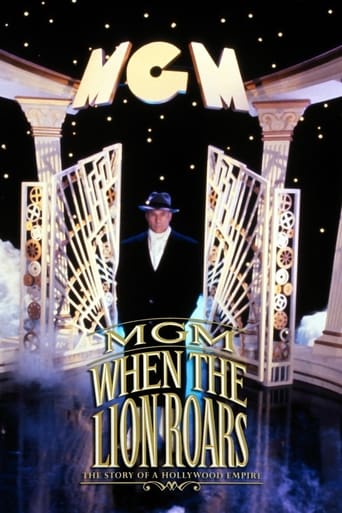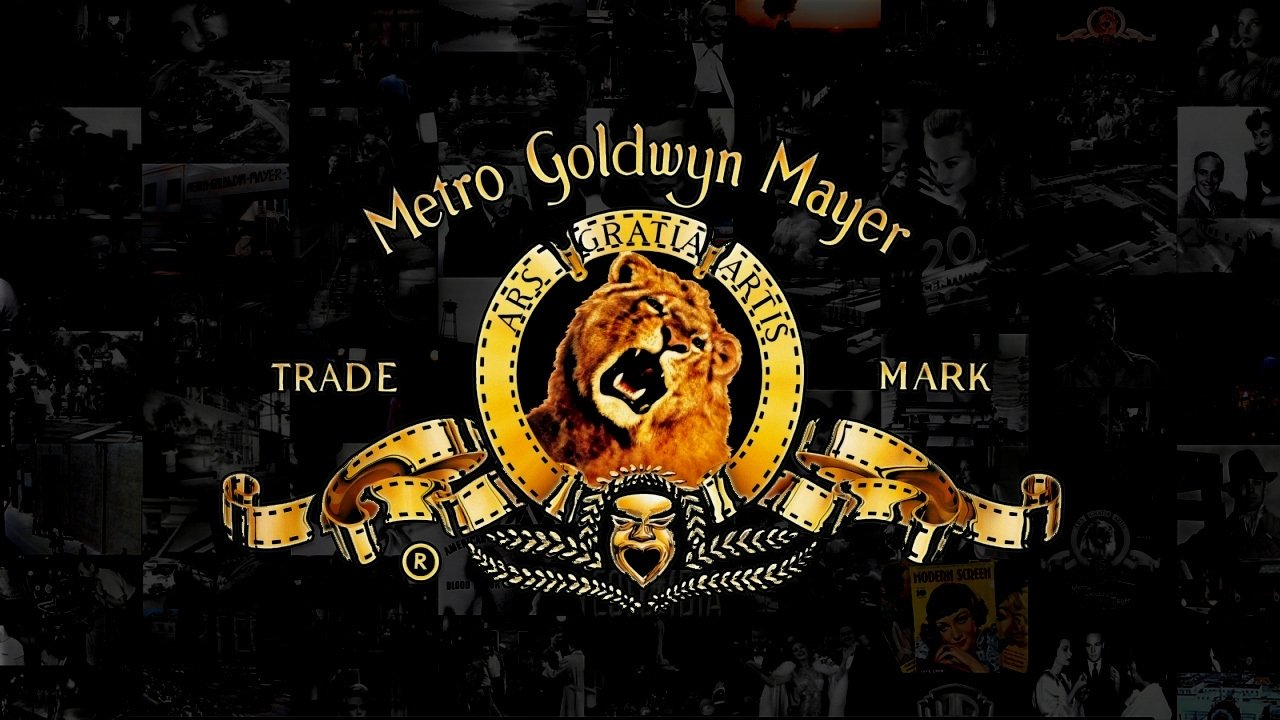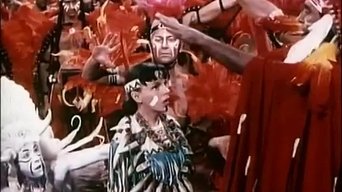mark.waltz
The world of the Hollywood studios is like a country towards itself: like the Vatican within Rome within the country of Italy. Yes, studio head Louis B. Mayer had to answer to the money men in New York and had to follow legal corporation laws set by United States law, but for nearly 30 years, he ran his empire with an often iron fist, like a loving but strict father who had to keep his children in line. Often, he'd have to deal with spoiled stars, falling legends and over budget producers and directors, but when he stepped out of his suite of offices to go onto a set, the studio trembled in anticipation as he made his way to where he normally would not set foot. There were visits to ancient Rome (the silent "Ben Hur"), a shaking San Francisco, a mythical country over the rainbow, war torn Europe and a Broadway where a musical show larger than any stage could be performed and the audience able to see everything.As narrated by "Star Trek: The Next Generation's" Patrick Stewart, this mini-series documentary profiles the movie studio that proclaimed more stars than there are in the heavens. Surely that was true. Silent era legends like Lon Chaney, Norma Shearer, Ramon Novarro, Lillian Gish, Garbo (only a last name for her was needed for the audience to know who she was) and John Glbert, some of whom did not transition well into the talkies, some of whom died early on. Rising stars like Joan Crawford, child stars like Mickey Rooney and Judy Garland, short term triumphs like Helen Hayes and Luise Rainer, and later pin-up girls like Lana Turner and Ava Gardner. The British invasion of famous actresses like Greer Garson and Deborah Kerr, hunks like Robert Taylor, Clark Gable and Howard Keel. The very independent Katharine Hepburn and her very talented long time co-star Spencer Tracy. The sophisticated comedy of William Powell and Myrna Loy. Too many to mention, yet thanks to TCM, the Warner Archives (an ironic twist in how MGM films come out on video today) and scores of memorabilia, these films and their stars and often directors will never be forgotten.There's the product: lavish musicals like "The Merry Widow", "Meet Me in St. Louis" and "Gigi", film version of the classic literature "A Tale of Two Cities", "David Copperfield", "A Christmas Carol", "Gone With the Wind" (only released by MGM, yet a part of their legacy as well) and "The Good Earth", and plays like "Dinner at Eight", "The Barretts of Wimple Street", "The Philadelphia Story" and "Romeo & Juliet". Historical epics like "Marie Antoinette" and "Queen Christina", operettas with Jeanette MacDonald and Nelson Eddy (still surprisingly popular today!), and a heavyset old woman who could stir up laughs by just eyeing Jean Harlow up and down. "Reading a book?", Marie Dressler asked, leading to a punch line that made it past the censors even in pre-code Hollywood. And then there were the series films, a precursor to TV. The Andy Hardy series honored what Mayer believed the All American family should be; A young doctor named Kildare dealt with his patients the way we would hope that all doctors would. A feisty young woman named Maisie revealed her heart of gold with everybody she encountered. While sipping martini's, Nick and Nora Charles solved murders. A beautiful Englishwoman discovered the sexy Tarzan the Ape Man and created years of adventures. Mickey and Judy put on shows in a barn and ended up babes on Broadway. There's the scandal. The fights between Mayer and the top unit producer Irving Thalberg, pretty much working himself to death and getting a caustic Mayer to claim that God was on his side in their feud. The affairs of certain actors kept out of the press, the secrets that certain actors were homosexual (thrust into loveless marriages in several cases) and ultimately the firing of Mayer by the money men in New York after his demanding that it was either him to go or new top producer Dory Schary. Actors interviewed recall seeing Mayer at the racetrack after his firing and describing him as a broken man. There are parallels to modern Hollywood, and scandals revealed that aren't discussed here reveals that there was much more going on than Hollywood gossip columnists were allowed to reveal at the time.Made for cable just as TCM was being launched, this documents so much and features many interviews with those who were there, either for old newsreels or newly filmed interviews. Helen Hayes described Mayer as evil, while Maureen O'Sullivan ("Tarzan") indicated that she only knew nice people. June Allyson discusses her friendship with Judy Garland and tears up. This covers much of the post golden years as well, the closing of the backlot, the auctions of costumes and props (many of them purchased by Debbie Reynolds for her museum) and the focus on the Las Vegas hotel MGM Grand which took away much of the movie studio's assets. Business men without the passion of making movies helped turn MGM into a lesser Hollywood studio, but eventually Ted Turner stepped in, at least getting the archives out there. He only ran the studio for a very short time, but starting TCM would add a new name into the list of those who did care. Thanks to him, these features are regularly shown, and shorts and other specials not seen in years have come to light. The lion may have roared the end, but for a time, it was the growl heard 'round the world.
blanche-2
"MGM: When the Lion Roars" is a 1992 documentary hosted by Patrick Stewart. Shown in three parts on Turner Classic Movies, it tells the story of the monolithic studio from its beginnings, taking us through the influence of the great Irving Thalberg, after his death, during World War II, after the war, the growth of television, and MGM's eventual demise.All of the studios had a particular look to their films and a strong point of view. MGM was known for its huge array of stars, its opulence, its classy musicals, and its family entertainment, especially under the aegis of Louis B. Mayer. Even its "B" movies, such as Dr. Kildare, had "A" movie quality.The studio's main problem was its lack of foresight and lack of awareness that the audience changed over time. The belief was that television was a fad, for instance - major error. And all the studios suffered when the courts broke up studio ownership of the movie theaters.The documentary is highly entertaining, filled with interviews, scenes, and musical numbers. Stewart voices the incorrect information that Jean Harlow died because her mother's religion didn't allow her to have treatment. Jean Harlow died of kidney disease, for which there was no cure, no transplant, no dialysis. She had plenty of medical attention, but there was nothing anyone could do once she developed the disease.Very enjoyable and well worth seeing.
Michael_Elliott
MGM: When the Lion Roars (1992) **** (out of 4)Mammoth, six-hour documentary covering every aspect of the legendary studio MGM from its first picture, He Who Gets Slapped in 1924 until its crumble starting in the late 60s. The documentary is broken up into three parts with the first going from 1924 until Irving Thalberg's death in 1936. The second covers the biggest part of the studios career with projects like The Wizard of Oz and Gone With the Wind but also the studio losing their female stars like Greta Garbo and Joan Crawford. The third and final segment covers the legendary musicals like Meet Me in St. Louis but also founder Mayer getting pushed to the side and the eventual fall from grace of the studio. The film pretty much covers ever aspect to the studio in its six-hour running time and for the most part there's not a single flaw in the film. Some could argue that certain actors or directors should have received more screen time but opinions on this are going to vary from person to person. The only thing I think the documentary overlooked was the fact that the studio did some pretty bad things including killing the career of Buster Keaton and the notorious edits to the film Greed. Both of these subjects are briefly mentioned but they play it off as nothing major. The biggest plus are some great clips from various films but be warned that the ending to a lot of the movies are ruined so you might do yourself a favor and watch some of them before viewing this documentary. Another fun aspect are the various clips from the Academy Awards where we get to see many of the MGM winner getting their prizes including Spencer Tracy. Patrick Stewart hosts and we get interviews with Mickey Rooney, Charlton Heston, Jackie Cooper, Helen Hayes, June Allyson, Richard Chamberlain, Stanley Donen, Roddy McDowall, Debbie Reynolds, Ernest Borgnine, Ricardo Montalban, Freddie Bartholomew, Lew Ayres, Van Johnson and Ester Williams among many others. Countless archival footage is also shown.
nickandrew
This is a must for Hollywood film buffs (especially those who love films from the 1920s to the 1950s). It tells the story by narrator/host Patrick Stewart of the history of the famous MGM studios from its beginning in 1924 to its fall in the early 1980s. Includes interviews with many MGM stars such as Helen Hayes, Jackie Cooper, Joan Crawford, as well as directors Clarence Brown and King Vidor. Clips from nearly every MGM film are shown, some you will see are: THE WIZARD OF OZ, GRAND HOTEL, GREED, BEN-HUR, THE WOMEN, GIGI, GONE WITH THE WIND, A WOMAN'S FACE, NINOTCHKA, GRAND PRIX, SINGIN' IN THE RAIN, etc. The documentary is very long, but worth seeing. Usually shown on PBS, but is available for purchasing. 4 stars here!


 AD
AD




